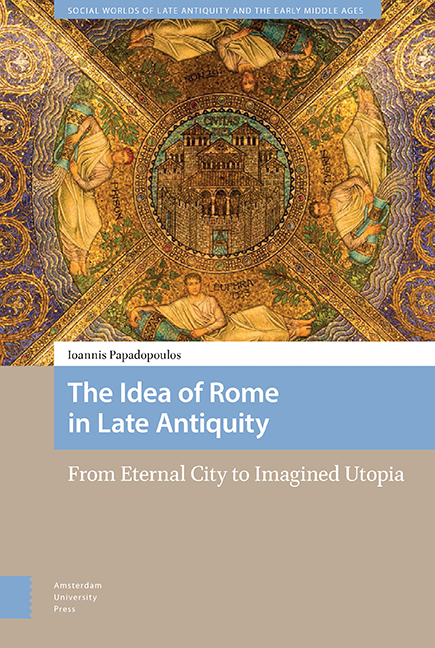Book contents
- Frontmatter
- Dedication
- Contents
- Introduction: Between a Physical and an Imaginary City
- I Looking Backwards: Ordo Renascendi
- II The Adventus of Constantius
- III Between Rome and Athens: The Artificial Romanitas of Julian
- IV Between the Altar and the Court: Symmachus and Claudian in Action
- V Between Christ and a Roman Place: The Emergence of Christian Rome in Time and Space
- VI Between Jerusalem and Babylon: The Archetype of Rome in the City of God
- Conclusions: From Rome to Eternity
- Bibliography
- Index
III - Between Rome and Athens: The Artificial Romanitas of Julian
Published online by Cambridge University Press: 11 November 2021
- Frontmatter
- Dedication
- Contents
- Introduction: Between a Physical and an Imaginary City
- I Looking Backwards: Ordo Renascendi
- II The Adventus of Constantius
- III Between Rome and Athens: The Artificial Romanitas of Julian
- IV Between the Altar and the Court: Symmachus and Claudian in Action
- V Between Christ and a Roman Place: The Emergence of Christian Rome in Time and Space
- VI Between Jerusalem and Babylon: The Archetype of Rome in the City of God
- Conclusions: From Rome to Eternity
- Bibliography
- Index
Summary
Approaching Julian's conception and interpretation of Romanitas as a case study, one encounters a paradox regarding his person as a historical figure and a Roman emperor. He was an active author throughout his adult life and by far the most productive of all Roman emperors who composed or attempted to compose anything (e.g. Claudius, Trajan, Marcus Aurelius, and even Constantine). This element alone makes Julian an almost unique case, since not only does he have a voice of his own in our sources, but his emphasis on altering certain social norms of his contemporary reality puzzled generations of historians struggling to interpret his thought. Julian’s version of Romanitas was a unique case; it was the result of a mix of ideas and concepts originating in his readings and imagination regarding the distant past of democratic Athens and republican Rome. From that point of view, the combination and mingling of those ideas were never really expressed or implemented in real time before or after his brief reign. This conception of Romanitas, therefore, was an artificial product of Julian’s interpretation and reflection on the classical Greek and Roman literature and of the utopian context of his approach to the city-state and its institutions as modus vivendi. The present chapter is an attempt to deconstruct aspects of Julianic thought and to explore his artificial Romanitas as well as the place and form of the archetype of Rome within it, which nurtured his vision of restoration. It will also show the flexibility and capability of Romanitas to evolve in different ways and express new sub-concepts, as the example of Julian will demonstrate. From that point of view, this case study is useful in order to understand the multiple forms of Romanitas that co-evolved during the fourth century AD. The emperor's programme was dominated by the strategic role of urban public life and the traditional institutions that he perceived as defining Hellenism and Romanitas for centuries. Within this framework, the urban archetypes of Rome and Athens establish a paradigm shift, contributing to a redefinition of Romanitas after what Julian considered an age of turbulence, which his government apparently brought to an end.
- Type
- Chapter
- Information
- The Idea of Rome in Late AntiquityFrom Eternal City to Imagined Utopia, pp. 87 - 106Publisher: Amsterdam University PressPrint publication year: 2021



